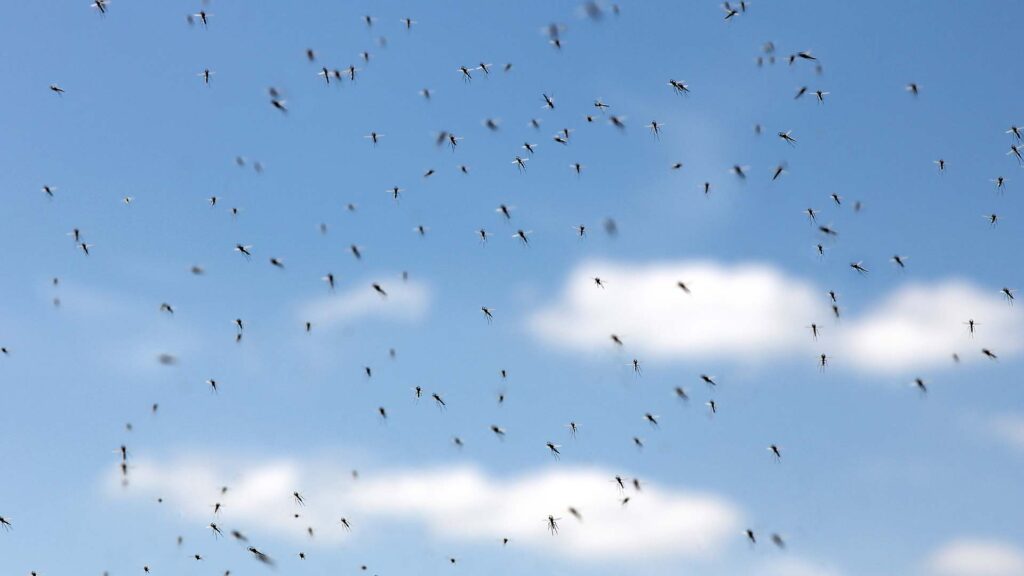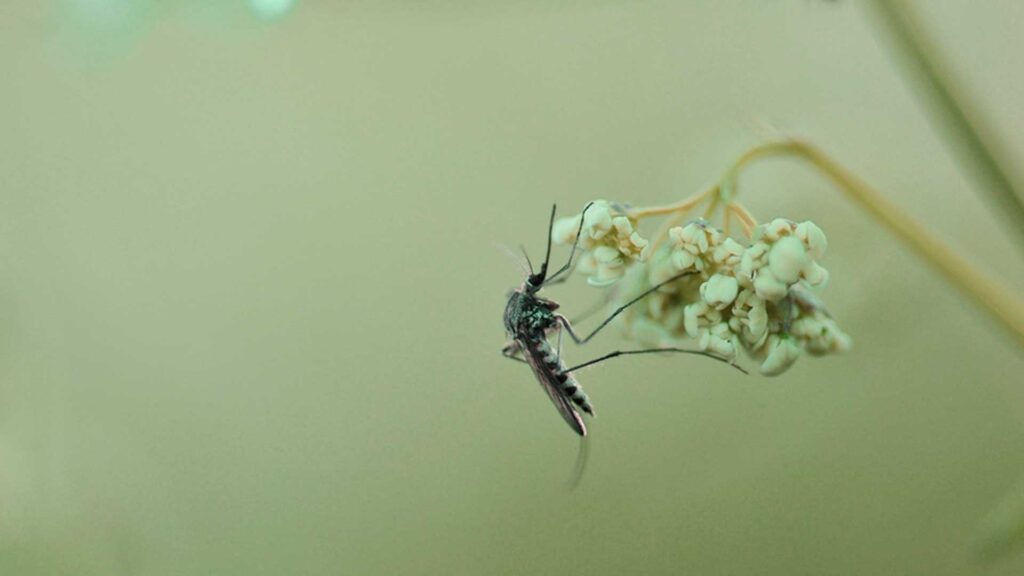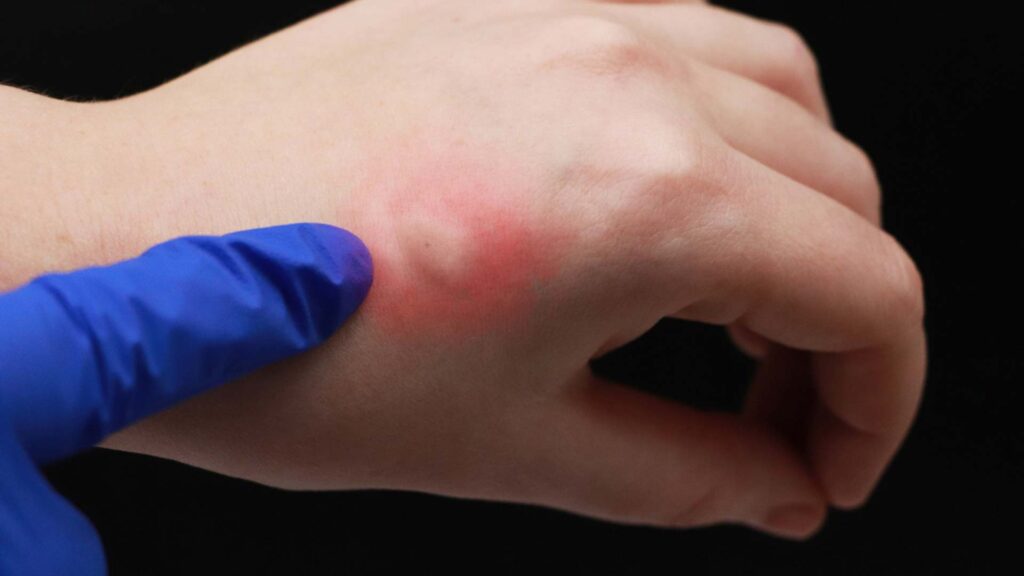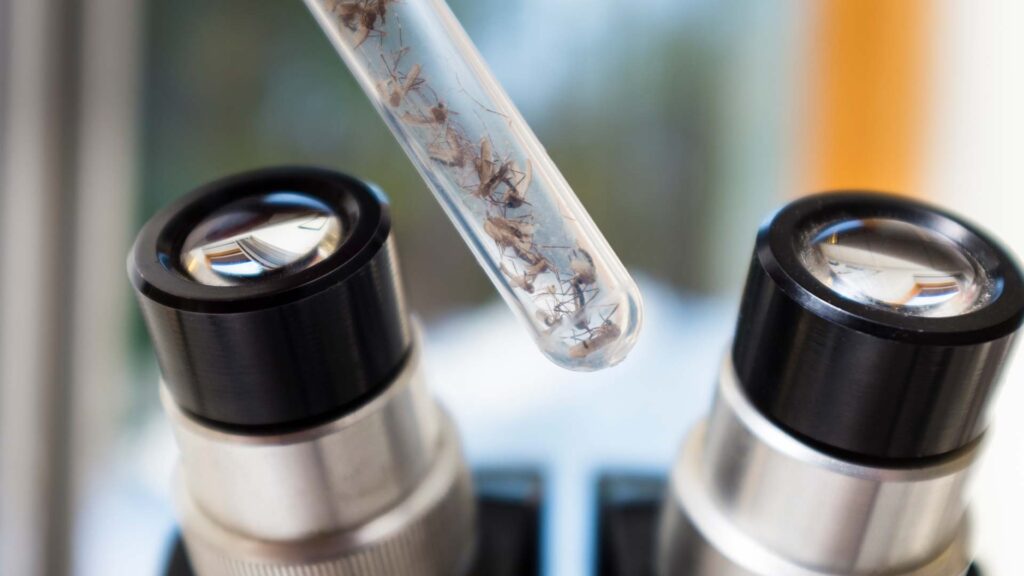What are the different types of mosquitoes?
Mosquitoes, with over 3,500 species worldwide, vary significantly in behavior and habitat. Key types include the Aedes mosquitoes, known for transmitting Zika and Dengue, and active primarily during the day. The Culex species, often associated with West Nile virus, are most active from evening to morning. Anopheles mosquitoes, historically linked to malaria, have a global presence. Each species has unique breeding habits, with some preferring standing water and others laying eggs in dry conditions. Understanding these differences is crucial for effective mosquito control and prevention of mosquito-borne diseases.

In the quiet of a summer evening, the familiar buzz of mosquitoes is often the first sign of an unwelcome presence in our backyards. These tiny, winged creatures, ubiquitous in almost every part of the world, are more than just a source of irritation at family barbecues and evening gatherings. Mosquitoes, in their diverse forms, play a significant role in the ecosystem and, more critically, in public health and home safety. For homeowners, understanding the various species of mosquitoes is not merely an exercise in entomology; it is a vital aspect of ensuring a safe and comfortable living environment.
Mosquitoes have been a part of the Earth’s fauna for millions of years, evolving into a complex array of species, each with unique characteristics and behaviors. This diversity is not just a matter of academic interest but has practical implications for homeowners and communities. Different species have different preferences for breeding and feeding, which in turn affects how they interact with human environments. Some are mere nuisances, leaving itchy bites, while others are dangerous vectors of diseases that have shaped human history.
In the United States alone, the variety of mosquito species is vast. From the urban landscapes of the Northeast to the humid climates of the South, each region hosts its own set of mosquito species, each presenting unique challenges to homeowners. In Mississippi, for example, over fifty species buzz through the air, with only a handful significantly impacting human activity. The Southern house mosquito and the Asian tiger mosquito are common in urban areas, while the salt marsh mosquito dominates coastal regions. Similarly, in California, species like Culex, Aedes, and Anopheles are of major concern due to their ability to transmit diseases.
The significance of understanding these differences cannot be overstated. Each species has its own habits and life cycles, which determine the best methods for control and prevention. For instance, the breeding sites preferred by Aedes mosquitoes – often in small, artificial containers – are different from those of Culex mosquitoes, which might prefer larger bodies of stagnant water. This knowledge is crucial for homeowners looking to protect their homes and families from the annoyance and potential health risks posed by these insects.
Moreover, the role of mosquitoes in public health is a story of global importance. Diseases like malaria, dengue fever, and the Zika virus, all transmitted by specific mosquito species, have caused widespread suffering and have been the focus of international health campaigns. The recent outbreaks of Zika virus, primarily spread by the Aedes aegypti mosquito, brought the world’s attention to the critical need for effective mosquito control and public health strategies.
As we delve deeper into the world of mosquitoes, this article aims to provide homeowners with a comprehensive understanding of the different types of mosquitoes they might encounter, the risks associated with each, and practical advice for safeguarding their homes. In doing so, we not only enhance our comfort and safety but also contribute to broader efforts in public health and environmental stewardship.
The Mosquito Spectrum: More Than Just a Buzz
When we think of mosquitoes, a singular image often comes to mind: a buzzing, annoying insect. However, the reality is far more complex. The mosquito spectrum encompasses a vast array of species, each with unique characteristics that affect our homes and health in different ways. Understanding these differences is crucial for homeowners, as it informs effective strategies for mosquito control and disease prevention.
In regions like Mississippi, the mosquito population is incredibly diverse, with over fifty known species. This diversity is mirrored globally, where thousands of mosquito species have been identified, each adapted to specific environments and climates. For instance, the Southern house mosquito (Culex quinquefasciatus), prevalent in urban areas, thrives in polluted, stagnant water, often found in drains and sewers. In contrast, the salt marsh mosquito (Ochlerotatus sollicitans), common along coastal areas, breeds in the brackish waters of marshes.
The Asian tiger mosquito (Aedes albopictus), another urban dweller, is known for its adaptability. It can breed in a variety of water-holding containers, from flower pots to discarded tires, making it a common backyard invader. This adaptability also makes it a formidable vector for diseases in urban settings.
Mosquito species vary not just in habitat preference, but also in size, appearance, and behavior. Some species are larger, with distinctive markings, like the striking black and white pattern of the Asian tiger mosquito. Others are more nondescript, blending into their environments.
Behaviorally, these species differ significantly. Some are aggressive biters, while others are more passive. The time of day when they are most active also varies. For example, Culex mosquitoes are most active during dusk and dawn, while Aedes species, including the infamous yellow fever mosquito (Aedes aegypti), primarily bite during the day.
Each mosquito species plays a unique role in its ecosystem. They serve as pollinators and as food sources for other wildlife. However, their impact on human habitats can be profound. Mosquitoes can be more than just a nuisance; they are vectors for diseases that have significant health implications. The diseases they carry, such as West Nile virus, Dengue, and Zika, have been at the center of public health concerns in various regions.
The mosquito spectrum varies significantly from one region to another, presenting unique challenges in mosquito control. In California, for example, the primary concerns are Culex, Aedes, and Anopheles mosquitoes, each requiring different management strategies. The effectiveness of control measures often depends on a thorough understanding of the local mosquito population – their breeding habits, flight range, and peak activity times.
The world of mosquitoes is rich and varied, presenting a complex challenge for homeowners and public health officials alike. Understanding the nuances of different mosquito species – their habitats, behaviors, and the risks they pose – is crucial in developing effective strategies for mosquito control and disease prevention. For homeowners, this knowledge translates into more targeted actions to protect their homes and health, emphasizing the importance of this often-overlooked aspect of home safety.
Key Mosquito Species and Homeowner Strategies
| Mosquito Species | Key Characteristics | Diseases Transmitted | Active Times | Homeowner Prevention Strategies |
|---|---|---|---|---|
| Southern House Mosquito (Culex quinquefasciatus) | Common in urban areas, breeds in standing water | West Nile Virus | Evening to Morning | – Regularly drain standing water (e.g., bird baths, pet bowls) – Install window and door screens – Use outdoor insecticides in areas of high activity |
| Asian Tiger Mosquito (Aedes albopictus) | Aggressive biter, black and white striped legs | Dengue, Zika, Chikungunya | Daytime (especially early morning and late afternoon) | – Eliminate standing water in flower pots, gutters, and other containers – Apply insect repellent during active hours – Cover water storage containers |
| Salt Marsh Mosquito (Ochlerotatus sollicitans) | Prevalent in coastal areas, bronze-brown with golden-yellow markings | Various encephalitis viruses | Varies, often dusk and dawn | – Maintain proper drainage in yards – Use mosquito nets and repellents – Participate in local salt marsh management programs |
| Western Malaria Mosquito (Anopheles hermsi) | Potential vector in Arizona and California, implicated in avian malaria | Malaria (historically) | Night | – Use bed nets in endemic areas – Apply indoor residual spraying – Report sightings to local health authorities |
| Inland Floodwater Mosquito (Aedes vexans) | Lays eggs in flood-prone areas, widespread | Rarely transmits diseases | Evening to Early Morning | – Manage irrigation to prevent excessive water accumulation – Clear debris from ditches and drains – Use larvicides in ponds and water features |
The Health Implications: Beyond the Itch
The impact of mosquitoes on human health extends far beyond the familiar itch of their bites. These tiny insects are formidable vectors for a range of diseases, some of which have significant health implications and have been at the center of public health concerns globally.
Mosquitoes are primarily known for their role in transmitting diseases like West Nile virus, Zika, Dengue, and Chikungunya. Each of these diseases is linked to specific mosquito species, which have distinct feeding patterns and habitats. For instance, the Culex species, active from evening to morning, are the primary carriers of the West Nile virus. This disease, which first gained attention in the United States in 1999, can lead to severe neurological illnesses like encephalitis or meningitis in a small percentage of infected individuals.
The Aedes species, particularly Aedes aegypti and Aedes albopictus, are daytime feeders known for spreading Zika, Dengue, and Chikungunya. The Zika virus outbreak in 2015-2016, predominantly spread by Aedes aegypti, was linked to severe birth defects in infants, drawing worldwide attention to the dangers posed by these mosquitoes. Dengue, often called “breakbone fever” due to its severe muscle and joint pains, has seen a dramatic increase in incidence over the past few decades. Chikungunya, while rarely fatal, causes debilitating joint pain that can last for weeks or even months.
Climate change and global travel are contributing to the spread of mosquito-borne diseases to regions previously unaffected. Warmer temperatures can expand the habitats of mosquito populations and accelerate the mosquito life cycle, potentially leading to increased transmission of diseases. For example, the recent northward spread of the Aedes species in Europe and North America has raised concerns about the potential for outbreaks of Dengue and Chikungunya in these areas.
The public health response to mosquito-borne diseases involves surveillance, vector control, and public education. Mosquito control programs, which include the use of larvicides and adulticides, are crucial in reducing mosquito populations. However, these efforts face challenges such as mosquito resistance to insecticides and environmental concerns related to chemical usage.
Public education campaigns focus on preventing mosquito bites and eliminating breeding sites. These include using insect repellents, wearing long-sleeved clothing, and removing standing water around homes. However, public compliance and awareness remain variable, impacting the effectiveness of these measures.
Research into mosquito-borne diseases has led to significant advancements, including the development of vaccines for diseases like Dengue. Ongoing research into mosquito genetics and behavior aims to develop innovative control methods, such as genetically modified mosquitoes or new types of insect repellents.
The health implications of mosquitoes extend far beyond their irritating bites. As vectors of serious diseases, they pose a significant public health challenge. Understanding the link between mosquito species and the diseases they carry is crucial for effective prevention and control. As we face changing environmental conditions and the global spread of these insects, a combined effort in research, public health strategy, and community participation is essential to mitigate the risks associated with these tiny but potent vectors of disease.
Practical Advice for Homeowners
For homeowners, proactive measures against mosquitoes are essential, blending daily habits with strategic planning. Firstly, water management is key. Mosquitoes breed in stagnant water, so eliminating these sources can drastically reduce their population. Homeowners should regularly inspect and empty items like bird baths, flowerpot saucers, and rain barrels. Additionally, ensuring that gutters and downspouts are clear of debris prevents water accumulation. For those with decorative ponds, introducing mosquito-eating fish or using mosquito dunks, which are harmless to other wildlife, can be effective.
Landscaping choices also play a crucial role. Mosquitoes thrive in dense vegetation and tall grasses. Regular lawn mowing, pruning of bushes, and clearing of leaf litter create less hospitable environments for mosquitoes. Planting mosquito-repellent plants like citronella, lavender, and marigolds can provide a natural deterrent. Furthermore, the use of outdoor fans on patios and decks can disrupt mosquito flight patterns, providing a simple yet effective method to keep these pests at bay during outdoor activities.
Personal protection should not be overlooked. Wearing long-sleeved shirts and pants during peak mosquito activity times, typically dawn and dusk, can provide a physical barrier against bites. The use of window and door screens in good repair is crucial to keep mosquitoes out of the home. For added protection, especially during outbreaks of mosquito-borne diseases, homeowners can consider professional pest control services to apply barrier treatments around the property, offering a more comprehensive defense against these pervasive pests.
Mosquito-Proofing Your Home
Eliminate Standing Water
- Regularly empty and clean birdbaths, flowerpot saucers, and pet water bowls.
- Fix leaky outdoor faucets and ensure gutters are clean and draining properly.
- Cover rain barrels with fine mesh to prevent mosquitoes from laying eggs.
Landscaping Tips
- Trim tall grass and shrubs where mosquitoes rest during hot days.
- Use plants like citronella, lavender, and marigold, which are natural mosquito repellents.
- Ensure proper drainage in your garden to avoid water accumulation.
Use of Screens and Nets
- Install fine mesh screens on windows and doors.
- Repair any holes in screens to prevent mosquitoes from entering.
- Consider using mosquito nets over beds in areas with high mosquito activity.
A Community Effort
Mosquito control is not just an individual responsibility; it requires community effort. Reporting high mosquito activity to local control agencies and participating in community clean-up efforts to eliminate breeding sites are vital steps. In areas like Arizona and California, integrated mosquito management strategies have been successful in controlling species like the Western malaria mosquito (Anopheles hermsi), once a vector for endemic malaria.
A Proactive Approach: Securing Health and Comfort in Our Homes
The conclusion of our journey into the world of mosquitoes brings us to a crucial realization: the battle against these tiny yet significant creatures is ongoing and multifaceted. Homeowners, armed with knowledge and proactive strategies, play a pivotal role in this fight, safeguarding not only their homes but also their health and that of their communities.
Understanding the intricate behaviors and habitats of different mosquito species is more than a scientific curiosity—it’s a practical tool in our arsenal. By recognizing the specific threats posed by species like the Culex, Aedes, and Anopheles, homeowners can tailor their prevention strategies more effectively. This targeted approach is crucial, especially in areas where certain species are more prevalent and pose a higher risk of disease transmission.
The role of individual action in mosquito control cannot be overstated. Simple measures, such as eliminating standing water, properly maintaining yards, and using effective repellents, can significantly reduce the likelihood of mosquito breeding and contact. These actions, while seemingly small, contribute to a larger collective effort in reducing the overall mosquito population and the risks they carry.
However, the responsibility does not lie with homeowners alone. Mosquito control is a community-wide concern that requires coordinated efforts. Public health campaigns, community clean-up drives, and educational programs play a vital role in raising awareness and encouraging collective action. By working together, communities can create environments that are less hospitable to mosquitoes, thereby reducing the spread of mosquito-borne diseases.
As we face the challenges of climate change and global travel, the dynamics of mosquito populations and the diseases they carry are continually evolving. This ever-changing landscape calls for adaptive strategies and ongoing research to develop more effective ways to control mosquito populations and prevent disease transmission.
The fight against mosquitoes transcends individual efforts, requiring a coordinated community response. In regions like Arizona and California, the success of integrated mosquito management (IMM) strategies showcases the power of collective action. These strategies combine public education, habitat modification, and the use of biological control agents to effectively manage mosquito populations. For instance, the control of the Western malaria mosquito (Anopheles hermsi), a potential vector for malaria, has been largely successful due to these community-based efforts. Public education campaigns play a crucial role, informing residents about the importance of eliminating standing water, the primary breeding ground for many mosquito species. By engaging in community clean-up days, residents can collectively remove debris and other water-holding containers from shared spaces, significantly reducing mosquito breeding sites.
Moreover, local governments and health agencies are pivotal in orchestrating large-scale control measures. This includes the use of environmentally safe larvicides in public water bodies and the release of biological control agents like mosquito-eating fish in ponds and water features. These agencies also monitor mosquito populations and disease incidence, providing timely alerts and guidance to the public. For example, during the Zika virus outbreak, health departments played a vital role in disseminating information and resources to help communities reduce mosquito populations and protect themselves from bites. Collaborative efforts, such as neighborhood watch groups focused on identifying and reporting potential mosquito breeding sites, further enhance the effectiveness of these measures.
Mosquito control is a shared responsibility that benefits from the synergy of individual actions and community initiatives. By working together, communities can create environments less conducive to mosquitoes, thereby protecting public health and enhancing the quality of life. As mosquito-borne diseases continue to pose a threat, the importance of community involvement in mosquito management cannot be overstated.
Frequently Asked Questions About the Different Types of Mosquitoes
How many types of mosquitoes are there?
There are over 3,500 species of mosquitoes worldwide, with at least 50 species found in regions like Mississippi alone. Each species has unique characteristics and behaviors.
What are some common mosquito species in urban areas?
In urban settings, the Southern house mosquito (Culex quinquefasciatus) and the Asian tiger mosquito (Aedes albopictus) are commonly encountered. These species are known for their adaptability to human environments.
Are there mosquitoes that prefer specific habitats?
Yes, different species have distinct breeding preferences. For example, salt marsh mosquitoes (Ochlerotatus sollicitans) thrive in coastal areas, while Aedes species often breed in artificial containers and dry conditions.
Which mosquitoes are known for spreading diseases?
The Aedes species, including Aedes aegypti and Aedes albopictus, are notorious for transmitting diseases like Zika, Dengue, and Chikungunya. Culex mosquitoes are primary vectors for the West Nile virus.
Mosquito Md Protection Plan
This plan comes with three gallons of Mosquito Deleto Yard Spray. The repellent is plant-based and effective for up to four weeks. It also comes with two two-packs of non-toxic Mosquito Dunks that can be used in standing water to target larvae for up to 30 days. You’ll also receive a citronella candle that can be used for up to 40 hours of burn time and one bottle of personal Sawyer Picaridin Insect Spray that lasts for up to 12 hours. The mosquito subscription plan is customized for your particular region, the products are DEET-free, and one standard plan offers four to six months of protection.
Can mosquitoes transmit diseases all day?
Most mosquitoes have a limited flight range, often less than a mile from their breeding site. However, some species like the Western encephalitis mosquito (Culex tarsalis) can travel 2-10 miles.
What are effective ways to prevent mosquito bites?
Using insect repellents containing DEET, Picaridin, or Oil of Lemon Eucalyptus is effective. Additionally, eliminating standing water around homes to disrupt breeding and wearing long-sleeved clothing during peak mosquito hours can help prevent bites.
Is mosquito control a community effort?
Yes, effective mosquito control often requires community involvement. This includes eliminating breeding sites, participating in local clean-up efforts, and reporting high mosquito activity to control agencies.
How do mosquito species differ in their breeding habits?
Mosquito breeding habits vary widely. For example, Aedes mosquitoes lay eggs in dry conditions, waiting for water to trigger hatching, while Culex species lay their eggs in standing water.
Are there any recent developments in mosquito control?
Advances in mosquito control include integrated management strategies, genetic modification techniques, and the use of environmentally friendly larvicides. These methods aim to control mosquito populations while minimizing ecological impact.




